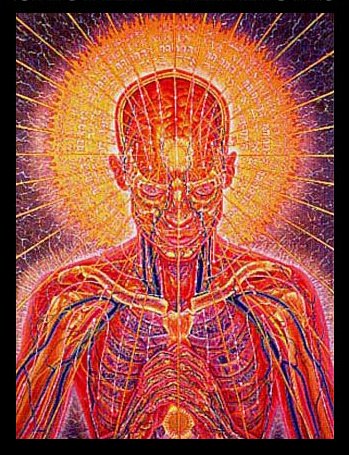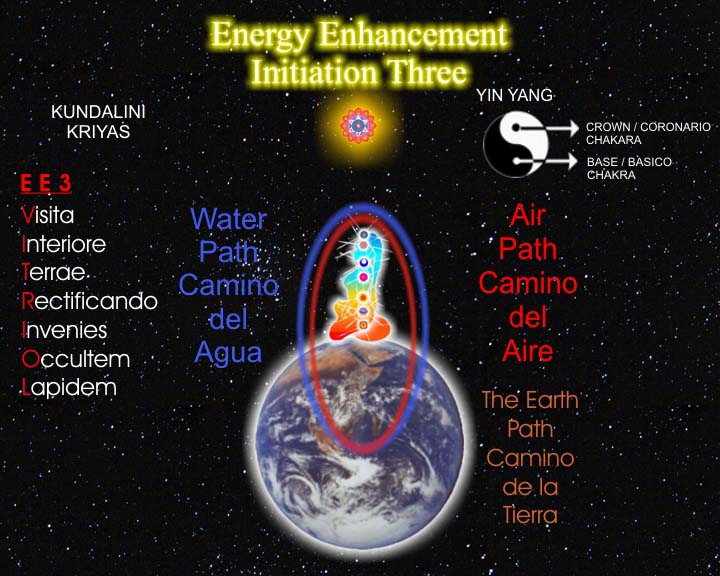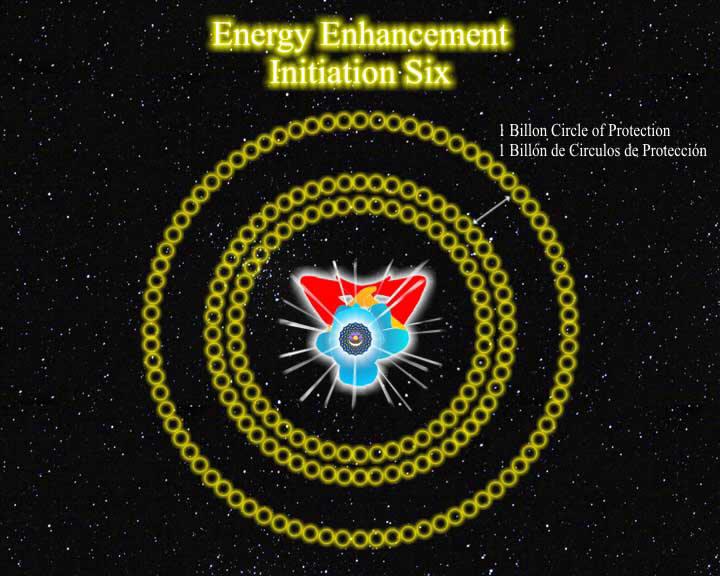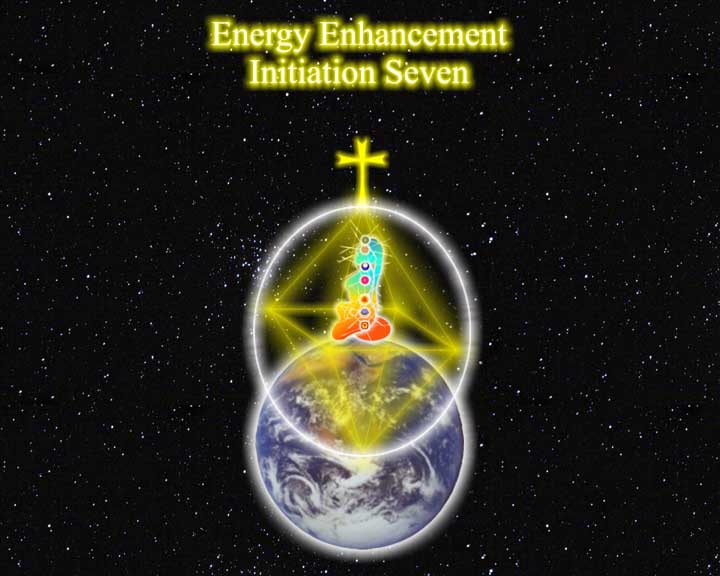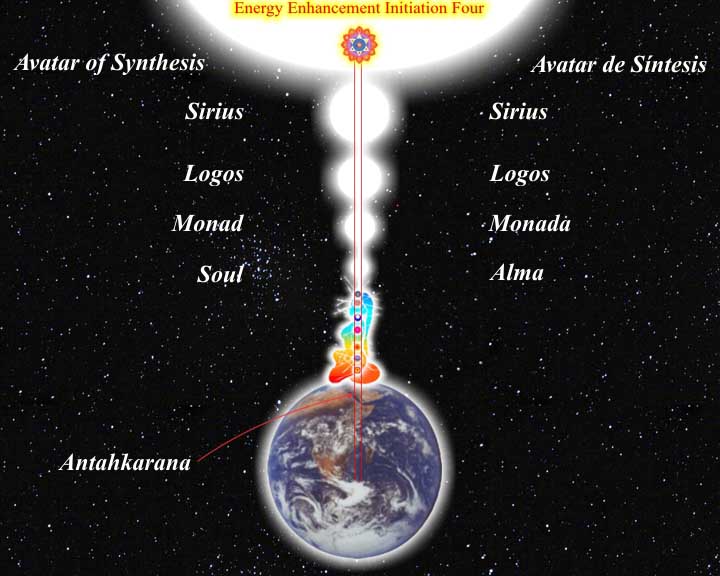I have explained this at length to students of Yoga to impress upon them the close co-ordination of body, breath and mind. This gives them a deeper understanding into the rationale of Yogic breathing exercises. Now, in these exercises, you have to concentrate on the breath. You may try one called Alternate Breathing. This is one of the simple techniques, alternate in the sense that you breathe in through one nostril, exhale through the other, then inhale once again through the second nostril and exhale through the first nostril. This completes one round. Thus, for this Alternate Breathing, you close your right nostril with your right thumb and inhale through the left nostril. When the inhalation is complete, you close the left nostril with your ring and middle fingers, simultaneously releasing the right nostril by raising the thumb, then exhale completely, slowly, smoothly and gradually through the right nostril.
You will find that in the process of breathing in this way, the world around you disappears. You are not aware of this body even, but are totally concentrated on the breath. There is no idea of the time that is elapsing either. When absorbed in this exercise, half an hour may pass and you will hardly be aware of the passage of time. What is the reason? Because this is an extremely vital process. Breathing is life’s central process on the physical level; it is the process that sustains all life, and when you begin to concentrate upon it, your whole mind becomes deeply absorbed. This is, therefore, the core of the very valuable means you may employ to get tranquillity and steadiness of mind.
To precede this exercise, and in the initial stages of the breathing discipline, the practice is very simple. You just sit in a relaxed and steady position, calmly breathing in and out through both nostrils. There are no complications, you just practise this deep, rhythmic breathing for ten or twelve days, or for a couple of weeks, morning and evening. You will soon find that your mind becomes more and more tranquil and steady. Things which upset you and irritated you before will no longer be able to do so, and whenever there is anything that you want to do, you will feel that the mind is already in a calmer state for concentrating and centering it upon the thing that you wish to do. Then, later on, you may start the Alternate Breathing exercise.
At the beginning of your practice of Alternate Breathing, just breathe in through the left nostril, breathe out through the right nostril, then take back through the right, and breathe out again through the left. Try this, say, six times, i.e., six complete rounds in the morning and six complete rounds in the evening when your stomach is not too full—not after your lunch or your dinner, but an hour before eating. After you have practised this for a month or so, then gradually insert at the end of each inhalation a short period for the retention of the breath inhaled. When you are in a state in which the breath is retained, you find that the mind is steady and calm. Take advantage of it, try to fix your mind and concentrate on some idea or symbol. You will find that under these circumstances your concentration is wonderful, for when the breath is arrested, the mind does not move and thoughts come under your control.
When you have reached the final stage in the breathing exercises, i.e., alternate breathing with retention of breath, keep at it and gradually try to increase the period of retention. This is an exercise that may be practised regularly by all people. Two or three hints about these exercises are:
(i) The retention of breath should at all times in your practice be comfortable and easy;
(ii) You should never feel as though you were suffocating or as though your retention were forced;
(iii) When you are about to exhale, you should be able to feel that you could retain the breath a few seconds longer if you wished;
(iv) The exhalation should always be smooth, unhurried and non-violent. Neither should it ever be forced. If it is forced and hurried, it means that you have over-retained the breath beyond your capacity and your lungs can no longer hold it. When you take care of the retention of breath, you feel that the exhalation is very smooth and beautiful. Just do it to a nicety.
Start holding the breath when you feel, “Yes, the lungs are full, but I am not going to pack them or press them”. As you retain the breath, develop, for yourself a sort of rhythmic count by which you can regulate the period of retention. The counts may be gradually increased. If you do this systematically, you will soon find that the mind, in an amazingly short time, becomes progressively steadier.
When there is steadiness of mind and you know how to control the thoughts, stability is found to become the normal condition of the mind-stuff. It is not so much the acting mind that you are trying to perfect, but the mind as it is, the very mind-stuff. When the mind-stuff is thus acted upon—put into a state of stability and steadiness—a certain quality which is to be found in the mind which is of the nature of Light, which is of the nature of balance and harmony, is increased. This is called the quality of Sattva and it is a peculiar psycho-spiritual quality within. When that quality increases in the mind-stuff, the whole mind tends to become harmonized, balanced and steady, and then that balance soon characterizes your whole personality. With the quality of Sattva predominating in your character, you become a balanced person. You are no longer afraid. At the end of a day’s work, you still feel that your mind is tranquil and serene. No one is ever able to put you “out of kilter”. This is the natural result of the practice of the process of breathing, steady posture, concentration and meditation.
|
Next: Chapter 14: Meditation And Prayer, 10.Meditation—Temporal and Spiritual
Energy Enhancement Enlightened Texts Sri Swami Sivananda The Path Beyond Sorrow
Chapter 14
- Sri Swami Sivananda, The Path Beyond Sorrow Chapter 14: Meditation And Prayer
Sri Swami Sivananda, The Path Beyond Sorrow Chapter 14: Meditation And Prayer, The great subject of meditation, which we have the good fortune to consider now, is one which provides the ultimate solution to the greatest problem which has faced and challenged mankind ever since the dawn of Creationthe problem of life as well as of death at energyenhancement.org
- Sri Swami Sivananda, The Path Beyond Sorrow Chapter 14: Meditation And Prayer, 1.Value Of Meditation
Sri Swami Sivananda, The Path Beyond Sorrow Chapter 14: Meditation And Prayer, , In meditation, you are raised into an experience where you can laugh at death, where you can treat it as a mere trifle. You are given the realization of your ever-changeless existence. You are birthless, deathless, changeless, without beginning or end. You are given the solid experience of that realization right here and nownot in some after-life, not in the beyond. Even while you are in this body, you are thus liberated from the terror and the fear of death. You know that if something perishes, it is of the earth, earthy, but it affects you not. You are the deathless Spirit indwelling the body, remaining absolutely untouched even when the body is dissolved. You know that you are glorious and independent of the body and the mind. You realize that to you, there is no need of this body, that it is the same to you whether you are within the body or without the body. That is the triumph attained through meditation at energyenhancement.org
- Sri Swami Sivananda, The Path Beyond Sorrow Chapter 14: Meditation And Prayer, 2.Intellect and Intuition
Sri Swami Sivananda, The Path Beyond Sorrow Chapter 14: Meditation And Prayer, 2.Intellect and Intuition, Outwardly, due to the limitations of your physical frame, you are finite. Your powers also are limited. Your intellect is bound by the necessity of basing all conceptual activity upon name and form, for without name and form mind cannot conceive of any idea. Therefore, the very function of your intellect is possible only within the framework of name and form at energyenhancement.org
- Sri Swami Sivananda, The Path Beyond Sorrow Chapter 14: Meditation And Prayer, 3.Life Is Meant for Meditation
Sri Swami Sivananda, The Path Beyond Sorrow Chapter 14: Meditation And Prayer, 3.Life Is Meant for Meditation, Is it to be taken, then, that until our meditation has reached that ultimate stage of perfection, where it is able to open the intuitionthe centre of true Consciousnessall our effort is futile or that, until that stage is reached, meditation is just toil and effort with no gainful return or reward? The answer is an emphatic NO! The exact opposite is the case. Meditation brings you a reward the very day you start it. Immediately you begin to feel the blessedness of meditation and you get a great return in terms of greater tranquillity, composure, clarity of mind, balance and peacefulness. All these results come from the very start of proper meditation. That is the greatness of this process at energyenhancement.org
- Sri Swami Sivananda, The Path Beyond Sorrow Chapter 14: Meditation And Prayer, 4.The Process of Meditation
Sri Swami Sivananda, The Path Beyond Sorrow Chapter 14: Meditation And Prayer, 4.The Process of Meditation, Now, let us consider the definition of meditation according to those who have mastered this science and have expounded its principles. Pre-eminently, meditation is a process of the mind. It is a mental-cum-intellectual process and, therefore, it is entirely interior in its realistic form and takes place in the silence of your inner being. Patanjali, a great Eastern sage and exponent of the great science of mind-control, has given the world one of the most thorough and scientific works on the subject of meditation. He defines meditation as continuous unbroken concentration or the unbroken flow of the mind concentrated upon a single subject. This means that meditation has a certain target, as it were, upon which the concentrated mind is brought to bear. The concentrated mind is kept in this state, and the flow or continuity of thought is kept unbroken. It may be compared to the flow of oil from one vessel to another. This is meditation at energyenhancement.org
- Sri Swami Sivananda, The Path Beyond Sorrow Chapter 14: Meditation And Prayer, 5.CharacterThe Gateway to Meditation
Sri Swami Sivananda, The Path Beyond Sorrow Chapter 14: Meditation And Prayer, 5.CharacterThe Gateway to Meditation, This process itself is very simple; it is the preparation for the process which is complex. If you want to shake hands with the President in the White House, it is very simple. Nothing to it! But, although the ultimate process is simple enough, yet all the red tape and all the hurdles that you have to face and surmount in order to get yourself into a position in which you stand before him and merely have to raise your hand and clasp his, all this preparation may take many months. You have to have all your credentials and the date of the interview fixed by the Presidents Office; then you have to book a seat on the plane or train, reserve your accommodation in Washington, and then, even if you do actually enter the White House, you may find that there are others who have come before you and a long wait may ensue before you may actually see the President at energyenhancement.org
- Sri Swami Sivananda, The Path Beyond Sorrow Chapter 14: Meditation And Prayer, 6.The Power of the One-track Mind
Sri Swami Sivananda, The Path Beyond Sorrow Chapter 14: Meditation And Prayer, 6.The Power of the One-track Mind, It is the concentrated mind which can work efficiently and powerfully. All outstanding achievements have been won in every field by means of the power of concentrated thought. Master statesmen, master military strategists, master engineers, master scientists, inventors and surgeons have all achieved success through the power of concentrated thought. They have had what is called a one track mind. They made themselves so. They deliberately cultivated the one-track mentality. What was Einstein if not a man of meditation? He was able to probe into the innermost secrets of the vast universe in meditation and there the truths came tumbling to him. They were revealed to him. His intuition got sparked and this led to the discovery of the cosmic secrets which he then formulated in amazing equations at energyenhancement.org
- Sri Swami Sivananda, The Path Beyond Sorrow Chapter 14: Meditation And Prayer, 7.The Laws Of Thought
Sri Swami Sivananda, The Path Beyond Sorrow Chapter 14: Meditation And Prayer, 7.The Laws Of Thought, Meditation succeeds in a marvellous way in revealing the great truths of life through the operation of the laws of thought. The first law of thought is: anything which is held in the mind persistently and intensely dwelt upon for a protracted period of time soon becomes concretized into fact. It becomes as actual as a concrete fact. This is one of the great laws upon which the knowledge of the power of thought is based. The other law, which is not restricted to the mental and intellectual level, but goes deeper and beyond and is much higher, is a spiritual law. This law is: such deeply concentrated thought persisted in to its ultimate conclusion suddenly takes a leap beyond the intellect and mind and enters the realm of intuition. This is the law of transcendence. When the mind is totally concentrated and deeply absorbed in this process of meditation, it transcends itself and you are plunged into the experience of Pure Consciousness. It is similar to the electric current switched on to an arc lamp. When the current reaches one terminal of the arc, it faces a gap separating the two terminals and then, suddenly, with a flash it springs out, bridging the gap in an instant and bursts into the incandescence of a dazzling light at energyenhancement.org
- Sri Swami Sivananda, The Path Beyond Sorrow Chapter 14: Meditation And Prayer, 8.The Role of Body, Mind and Prana in Meditation
Sri Swami Sivananda, The Path Beyond Sorrow Chapter 14: Meditation And Prayer, 8.The Role of Body, Mind and Prana in Meditation, Body, Mind and Prana are all interconnected. There is, therefore, another great help for you to be found in the practice of sitting steadily in one position without moving the body, and holding that position in tranquillity. In the preliminary stages of Raja Yoga discipline, you find that the basis of your life of Yoga has to be established on an absolutely pure, ethical and moral life. Then you are ready to start sitting steadily every day. At some special time each day you should retire into a quiet corner and sit there steadily poised for your practice. You may sit on a chair, if you prefer such a position, keeping the spine erect, relaxing your body totally, locking your fingers, resting them on your knees, and try to remain in that state at energyenhancement.org
- Sri Swami Sivananda, The Path Beyond Sorrow Chapter 14: Meditation And Prayer, 9.Breathing Exercise for Mental Tranquillity
Sri Swami Sivananda, The Path Beyond Sorrow Chapter 14: Meditation And Prayer, 9.Breathing Exercise for Mental Tranquillity, I have explained this at length to students of Yoga to impress upon them the close co-ordination of body, breath and mind. This gives them a deeper understanding into the rationale of Yogic breathing exercises. Now, in these exercises, you have to concentrate on the breath. You may try one called Alternate Breathing. This is one of the simple techniques, alternate in the sense that you breathe in through one nostril, exhale through the other, then inhale once again through the second nostril and exhale through the first nostril. This completes one round. Thus, for this Alternate Breathing, you close your right nostril with your right thumb and inhale through the left nostril. When the inhalation is complete, you close the left nostril with your ring and middle fingers, simultaneously releasing the right nostril by raising the thumb, then exhale completely, slowly, smoothly and gradually through the right nostril at energyenhancement.org
- Sri Swami Sivananda, The Path Beyond Sorrow Chapter 14: Meditation And Prayer, 10.MeditationTemporal and Spiritual
Sri Swami Sivananda, The Path Beyond Sorrow Chapter 14: Meditation And Prayer, 10.MeditationTemporal and Spiritual, Now, before dealing with this subject, we have to note a distinction. We have been told that any process of concentrated thought is meditation. Meditation is a process used by all people. I have pointed out that scientists, for instance, are meditators; that inventors, statesmen, great military strategists like Napoleon, are all meditators. Great strategists, like Napoleon, sketched out their campaigns to the minutest detail, beforehand. Vast structures, like the Empire State Building, were erected by engineers who laid their plans, likewise, after concentration and meditation. Every nail that was necessary, every ounce of material, every angle and joint, was clearly indicated in the blueprint. As such, the process of meditation by itself is a purely scientific technique, but in its application in Yoga, it is entirely spiritual and not material or temporal at energyenhancement.org
- Sri Swami Sivananda, The Path Beyond Sorrow Chapter 14: Meditation And Prayer, 11.Aids to Successful Meditation
Sri Swami Sivananda, The Path Beyond Sorrow Chapter 14: Meditation And Prayer, 11.Aids to Successful Meditation, From the great mystics I shall give you some valuable suggestions for success on the path of meditation. They are: (a) Constant recollection; (b) Continuous prayerfulness; (c) Repetition of the Divine Name at energyenhancement.org
- Sri Swami Sivananda, The Path Beyond Sorrow Chapter 14: Meditation And Prayer, 12.MeditationA Panacea for All Ills
Sri Swami Sivananda, The Path Beyond Sorrow Chapter 14: Meditation And Prayer, 12.MeditationA Panacea for All Ills, St. Peter of Alcantara, one of the medieval sages, has said that it is morally impossible for him who neglects meditation (mental prayer) to live without sin. He who neglects mental prayer does not need a devil to carry him to hell; he takes himself there by his own hand. It must be stated, without reservation, that no other means has the unique efficacy of meditation and that, as a consequence, its daily practice can in no wise be substituted for. The common practice of all saints and the important ecclesiastical documents demonstrate how highly one should esteem meditation at energyenhancement.org
|
